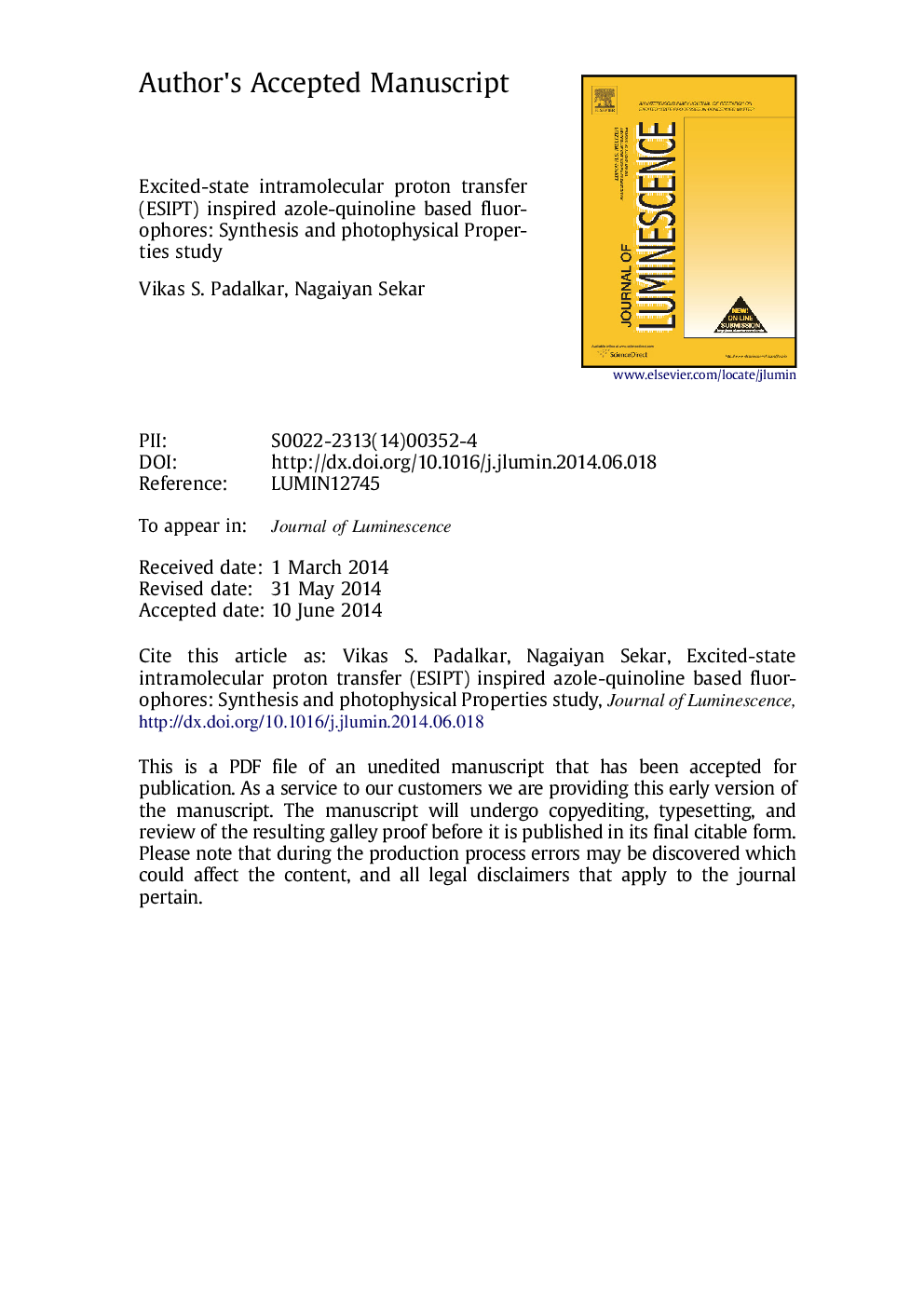| Article ID | Journal | Published Year | Pages | File Type |
|---|---|---|---|---|
| 5399410 | Journal of Luminescence | 2014 | 27 Pages |
Abstract
7-Hydroxy-3-(4-nitrophenyl)quinoline-6-carboxylic acid was obtained by the condensation reaction of p-amino salicylic acid and 4-nitrophenylmalonadialdehyde which was obtained from phenylacetonitrile through nitration, hydrolysis and Vilsmeier reaction. 7-Hydroxy-3-(4-nitrophenyl) quinoline-6-carboxylic acid was condensed with different o-aminophenols or o-aminothiophenol in ethanol in the presence of phosphorustrichloride. Synthesized quinoline contained benzimidazole and benzothiazole moieties. Photophysical behaviors of these compounds in solvents of different polarities were studied using UV-vis and fluorescence spectroscopy. The compounds showed single absorption in all the studied solvents. The dual emissions (normal emission and ESIPT emission) as well as large Stokes׳ shift emission pattern were observed for the synthesized fluorophores. The photophysical study shows that the emission properties of the compounds depend on the solvent polarity. The photophysical properties of the compounds were compared with structurally analogous ESIPT quinoline. Thermal stability of the compounds was studied using thermogravimetric analysis and results show that compounds are thermally stable up to 300 °C. The synthesized quinoline derivatives were characterized using elemental analysis, FT-IR and 1H -NMR, 13C -NMR spectroscopy and mass spectral analysis.
Related Topics
Physical Sciences and Engineering
Chemistry
Physical and Theoretical Chemistry
Authors
Vikas S. Padalkar, Nagaiyan Sekar,
